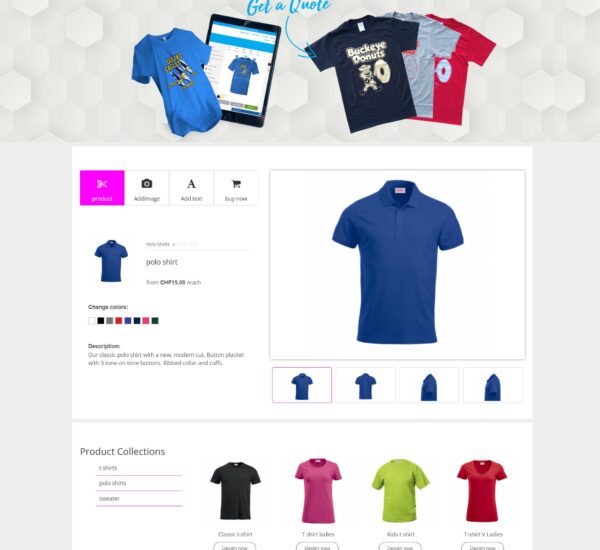
Do you want to grow your business online and achieve your goals? Do you want to learn the best practices and techniques of digital marketing that can help you attract more customers, increase your sales, and boost your brand awareness? If you answered yes, then this article is for you.
In this article, we will share with you some proven digital marketing strategies that can help you unlock success and take your business to the next level. We will cover topics such as SEO, content marketing, social media marketing, email marketing, video marketing, and more.
We will also show you some examples and case studies of how other businesses have used digital marketing to grow their online presence and revenue. By the end of this article, you will have a clear understanding of how digital marketing can help you grow your business and what steps you need to take to implement it effectively.
Also Read: Importance of digital marketing
Understanding the Digital Marketing Landscape
The world of digital marketing encompasses various channels that can be leveraged to reach and engage with your audience. Understanding these channels and their benefits is essential for developing a well-rounded strategy. Key digital marketing channels include:
- Search Engine Optimization (SEO): SEO focuses on optimizing your website to rank higher in search engine results pages (SERPs). By conducting keyword research, optimizing on-page elements, and building quality backlinks, you can enhance your website’s visibility and organic traffic.
- Pay-Per-Click Advertising (PPC): PPC allows you to display targeted ads on search engines and other platforms. By selecting relevant keywords, crafting compelling ad copy, and optimizing landing pages, you can drive qualified traffic to your website and increase conversions.
- Social Media Marketing: Social media platforms offer immense opportunities to connect with your target audience. By creating engaging content, fostering meaningful interactions, and utilizing social media advertising, you can amplify brand awareness and cultivate a loyal community of followers.
- Email Marketing: Email marketing remains one of the most effective ways to nurture leads and engage with customers. By building a quality email list, creating personalized content, and tracking campaign metrics, you can strengthen customer relationships and drive conversions.
- Content Marketing: Content marketing involves creating valuable and relevant content to attract and engage your audience. By developing a content marketing strategy, crafting high-quality content, and optimizing it for search engines, you can establish thought leadership and drive organic traffic.
Defining Business Objectives and Target Audience
To create a successful digital marketing strategy, it’s essential to set clear objectives and understand your target audience:
- Setting Clear and Measurable Goals: Identify specific objectives that align with your business vision, such as increasing website traffic, generating leads, improving brand visibility, or boosting sales. Ensure that these goals are measurable, enabling you to track progress and assess the effectiveness of your strategies.
- Identifying and Understanding the Target Audience: Conduct thorough market research to identify your target audience’s demographics, interests, pain points, and online behavior. Create buyer personas that represent your ideal customers, enabling you to tailor your marketing efforts to their needs and preferences effectively.
Developing a Comprehensive Digital Marketing Strategy
Building a comprehensive digital marketing strategy lays the foundation for success:
- Conducting a SWOT Analysis: Perform a comprehensive analysis of your business’s strengths, weaknesses, opportunities, and threats. This evaluation will help you identify areas where you can leverage digital marketing effectively and address potential challenges.
- Defining the Unique Selling Proposition (USP): Differentiate your business by identifying its unique selling proposition. Determine what sets you apart from competitors and communicate this effectively in your digital marketing efforts.
- Selecting the Most Effective Digital Marketing Channels: Based on your target audience, goals, and budget, choose the digital marketing channels that are most likely to yield the desired results. Consider a multi-channel approach to maximize your reach and engagement.
- Allocating Resources and Budget: Determine the necessary resources, including budget, personnel, and tools, required to execute your digital marketing strategy effectively. Allocate resources accordingly to ensure optimal utilization.
- Establishing a Timeline and Benchmarks: Set a realistic timeline for implementing your digital marketing strategies. Establish benchmarks and milestones to track progress and make adjustments as needed.
Implementing Effective SEO Strategies
Search engine optimization plays a pivotal role in driving organic traffic and improving visibility:
- Conducting Keyword Research: Identify relevant keywords and phrases that align with your business and audience. Use keyword research tools to uncover high-traffic, low-competition keywords to optimize your content and website.
- On-Page Optimization Techniques: Optimize your website’s on-page elements, including meta tags, headings, URLs, and image alt texts. Ensure your content is well-structured, readable, and optimized for targeted keywords.
- Off-Page Optimization Techniques: Build high-quality backlinks from reputable websites to enhance your website’s authority and credibility. Implement link-building strategies such as guest blogging, influencer outreach, and content promotion to generate valuable backlinks.
- Monitoring and Measuring SEO Performance: Utilize analytics tools to monitor your website’s organic traffic, keyword rankings, and other SEO metrics. Regularly analyze data to identify areas for improvement and optimize your SEO strategy accordingly.
Leveraging Pay-Per-Click Advertising
Pay-per-click advertising enables targeted exposure and immediate results:
- Creating Targeted PPC Campaigns: Set up PPC campaigns on platforms such as Google Ads or social media advertising platforms. Define your target audience, select relevant keywords, and set your budget and bidding strategy.
- Choosing the Right Keywords and Ad Copy: Conduct thorough keyword research to identify high-converting keywords for your PPC campaigns. Craft compelling ad copy that resonates with your audience and encourages clicks.
- Optimizing Landing Pages for Conversion: Ensure that your landing pages are well-designed, user-friendly, and optimized for conversion. Implement clear call-to-action (CTA) buttons, compelling headlines, and relevant content to drive conversions.
- Tracking and Analyzing PPC Campaign Performance: Regularly monitor and analyze your PPC campaign performance. Evaluate metrics such as click-through rate (CTR), conversion rate, and return on ad spend (ROAS). Make data-driven adjustments to optimize campaign performance.
Harnessing the Power of Social Media Marketing
Social media platforms provide opportunities for engagement and brand exposure:
- Selecting the Most Relevant Social Media Platforms: Identify the social media platforms where your target audience is most active. Focus your efforts on those platforms to effectively reach and engage with your audience.
- Creating Engaging and Shareable Content: Develop a social media content strategy that aligns with your brand identity and resonates with your target audience. Create visually appealing and compelling content, including images, videos, and infographics, to drive engagement and shares.
- Building and Nurturing a Community of Followers: Interact and engage with your social media followers by responding to comments, messages, and mentions promptly. Foster a sense of community by sharing user-generated content and hosting contests or giveaways.
- Utilizing Social Media Advertising Options: Leverage social media advertising features such as boosted posts, sponsored content, or targeted ads to expand your reach and target specific demographics. Utilize detailed audience targeting options provided by each platform.
- Measuring Social Media ROI: Track social media metrics such as follower growth, engagement rate, click-throughs, and conversions. Analyze the data to assess the effectiveness of your social media marketing efforts and make data-driven optimizations.
Crafting Effective Email Marketing Campaigns
Email marketing remains a powerful tool for nurturing leads and driving conversions:
- Building a Quality Email List: Implement lead generation strategies such as website opt-in forms, gated content, or exclusive offers to build a quality email list. Focus on capturing relevant information from your subscribers.
- Creating Personalized and Compelling Email Content: Segment your email list based on demographics, interests, or purchase history to send personalized and targeted email campaigns. Craft compelling subject lines and engaging content that drives opens, clicks, and conversions.
- Optimizing Email Deliverability and Open Rates: Follow email deliverability best practices, such as avoiding spam trigger words and regularly cleaning your email list. Test and optimize your subject lines, sender name, and preview text to improve open rates.
- Testing and Optimizing Email Campaigns: A/B test different elements of your email campaigns, such as subject lines, CTAs, or email designs. Analyze the results to identify the most effective strategies and optimize your future campaigns accordingly.
- Analyzing Email Campaign Metrics: Monitor key email marketing metrics, including open rates, click-through rates, conversion rates, and unsubscribe rates. Use this data to measure the success of your campaigns and identify areas for improvement.
Creating Compelling Content for Digital Marketing
Content marketing plays a vital role in attracting and engaging your audience:
- Understanding the Importance of Content Marketing: Recognize that content marketing is not just about promoting your products or services but providing valuable information and solving your audience’s pain points. Focus on creating content that educates, entertains, and engages your target audience.
- Developing a Content Marketing Strategy: Define your content marketing goals, target audience, and content formats. Create an editorial calendar to plan and organize your content creation and distribution.
- Creating High-Quality and Engaging Content: Produce well-researched, high-quality content that resonates with your audience. Use various formats, including blog posts, videos, infographics, podcasts, and case studies, to cater to different preferences.
- Optimizing Content for Search Engines and User Experience: Incorporate targeted keywords naturally into your content to improve search engine visibility. Ensure your content is easy to read, visually appealing, and optimized for mobile devices.
Monitoring, Measuring, and Analyzing Performance
Regular monitoring and analysis are crucial for optimizing digital marketing strategies:
- Setting Up Analytics Tools and Tracking Systems: Implement analytics tools like Google Analytics to track website traffic, conversions, and user behavior. Set up conversion tracking and goal tracking to measure the effectiveness of your campaigns.
- Key Performance Indicators (KPIs) for Digital Marketing: Identify relevant KPIs based on your goals and objectives. Examples include website traffic, bounce rate, conversion rate, average order value, or customer lifetime value. Track these metrics consistently to gauge performance.
- Analyzing Data and Making Data-Driven Decisions: Regularly analyze the collected data to gain insights into your digital marketing efforts. Identify trends, patterns, and areas for improvement. Use this information to make data-driven decisions and optimize your strategies.
- Making Adjustments and Optimizations Based on Performance Insights: Based on the analysis, make necessary adjustments to your digital marketing strategies. Optimize underperforming campaigns, allocate resources effectively, and refine your targeting and messaging for better results.
Staying Ahead of Digital Marketing Trends and Innovations
The digital marketing landscape is continually evolving. Stay updated and embrace new trends and innovations:
- Keeping up with Industry News and Updates: Follow reputable digital marketing blogs, industry publications, and thought leaders to stay informed about the latest trends, updates, and best practices. Attend conferences and webinars to expand your knowledge.
- Embracing Emerging Technologies and Platforms: Be open to adopting emerging technologies, such as artificial intelligence (AI), chatbots, or voice search optimization. Experiment with new platforms and features to reach your audience effectively.
- Experimenting with New Strategies and Techniques: Allocate time and resources for experimentation. Test new strategies, channels, or content formats to identify opportunities for growth. Analyze the results and incorporate successful tactics into your ongoing strategies.
Unlocking success in digital marketing requires a combination of proven strategies, adaptability, and continuous improvement. By understanding the digital marketing landscape, defining business objectives, and implementing effective tactics across SEO, PPC, social media, email marketing, and content marketing, you can elevate your business’s online presence and drive growth.
Regular monitoring, analysis, and staying ahead of digital marketing trends will ensure ongoing success in an ever-evolving digital landscape. Embrace these strategies and unlock the full potential of digital marketing for your business.







